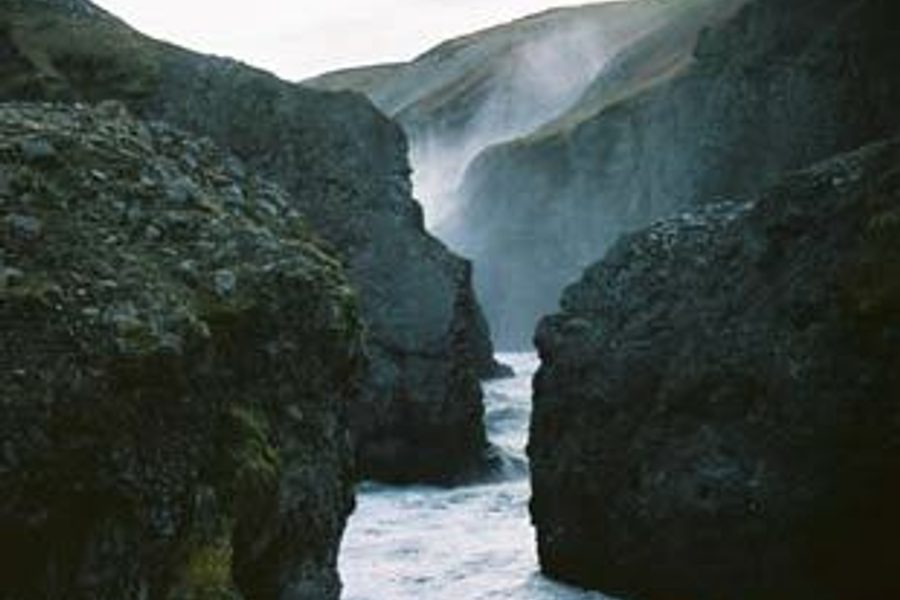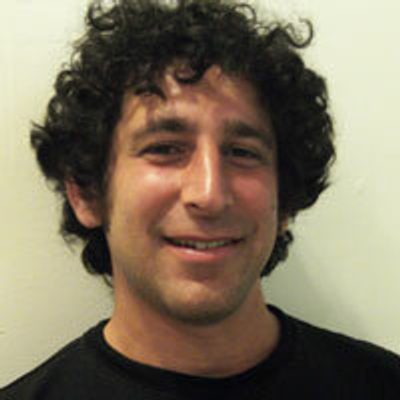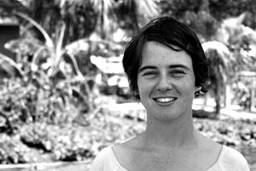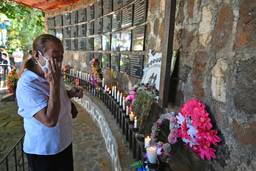A Dark Night in Iceland
Environmentalists decry the privatization of their country’s clean energy resources
Andrew Stelzer

On September 28, the lights went out in Reykjavik – for a publicity stunt to kick off the start of the annual international film festival. Although it was cloudy that night, and the stars did not shine down on the city, the romance of the return to the natural state for 30 minutes should have been a great pleasure to the man whose brainchild it was. But as reporters asked Andri Snær Magnason, a popular children’s author, about his idea to let Icelanders appreciate the natural beauty of the night sky, he found only bitter irony that the same day also marked the start of one of the greatest man-made environmental disasters in Iceland’s history.
As the lights came back on in the capital, 450 miles to the northeast several dozen square kilometers of fjords, waterfalls and reindeer-grazing grounds were going underwater, most likely never to be seen again.
The flooding was engineered in preparation for the opening of the Kárahnjúkar Power Station, located in Egilsstadir, a town of 2,000 people in eastern Iceland. Consisting of 5 major dams, this hydroelectric project blocked two glacial rivers – the Jökulsá á Dal and Jökulsá í Fljótsdal – that, until September, had run into Héradsflói Bay. Today, however, they flow into a reservoir, which will cover 22 square miles and be 200 feet deep by the fall of 2007. Water will be brought from the reservoir to the power station through a series of tunnels more than 30 miles long, drilled through mountains and reinforced with steel.
“This was the last piece of wilderness in Iceland vegetated from glacier to sea,” says photographer Bjarki Bragason. “So it was a one-off specimen of Arctic nature that’s rapidly disappearing; not only here but in the other countries as well.” Bragason, a prototypical Scandinavian at well over 6 feet, spent 10 days hiking around the site, before and after the 650-foot high dam was closed, to photograph what many consider the last real wilderness in Europe.
Bragason says the damning of the muddy rivers will harm the marine ecosystem. “The chemicals that are in glacial rivers are extremely important for the ecosystem of the sea, and when it is not running its direct course anymore, those chemicals won’t be distributed into the seabed, and the sea itself,” he explains. “That’s something we don’t know the consequences of.” Bragason adds that the project is unsustainable.
Bragason calls the power station an “island in the energy system,” because none of the energy generated will directly benefit Icelanders. Instead, it will all flow 18 miles southeast of the dam, to the town of Reydarfjördur, where the U.S.-based company Alcoa has built an aluminum smelter, scheduled to start operations in April.
Last March, Magnason changed his cap from children’s book author to investigative journalist when he published Dreamland: A Self-help Book for a Scared Nation, a best-selling expose of the Icelandic government’s plan to sell off virtually all of the nation’s hydroelectric and geothermal power. By “just Googling two things together,” Magnason says he was able to uncover a scheme by government engineers to turn Iceland into what he calls a kind of “Northern Kuwait.” As a result, this island nation of 300,000 is going through what he calls “a democratic revolution.” But the question remains: When the next elections arrive in May, will it all be too late?
— — — — — — — — — -
Turn on a kitchen faucet in Iceland, and the water is hot – scalding hot. It comes straight from underground, no heating needed; in other words, it’s a clean energy advocate’s dream. “Iceland is the only western country that produces all its electricity from emission-free and sustainable natural resources in the form of geothermal and hydro power,” reads the first sentence of “Environment in Our Hands,” a 10-page brochure published by Landsvirkjun, Iceland’s state-owned power company. A statement on their Web site adds: “Our aim is to take full advantage of Iceland’s energy resources.”
It’s Iceland’s potential to become the world’s first country reliant only on clean energy that has made the power station the most hotly debated issue in decades. Environmentalists maintain that the government is selling off their resources to multinationals in a way similar to third world dictatorships, while supporters argue that those corporations would otherwise go elsewhere, and invest in more environmentally harmful projects.
Iceland has the world’s highest electricity consumption per capita, but because of its geothermal and hydroelectric power plants, the country’s level of CO2 emissions from electricity production is the lowest in the Western world. Magnason says that the government and the national energy company have used Iceland’s green reputation as political cover for decisions that run counter to the goal of sustainability.
A special exemption negotiated under the Kyoto Protocol is of particular concern. In 1990, when most other countries were told they had to reduce carbon emissions, and require companies to pay for excess pollution, Iceland was given permission to raise its CO2 emissions by about 10 percent. Furthermore, a “small country” provision, tailor-made for Iceland, was created, exempting the nation from counting most emissions caused by new power-intensive industries. As Landsvirkjun, the national power company puts it: “The benefit to Icelanders of this provision is 50 percent of their 1990 emissions being added to their quota.”
The benefits to any industry that relocates to Iceland are numerous. No need to buy carbon credits; instead, they can brag to investors and critics that they use “clean” energy and are thus saving the planet. Alcoa spokeswoman Erna Indrioadóttir says criticism of Kárahnjúkar should be directed at the government, not Alcoa. Yet, she thinks it is the right way to go. “We have green resources here in Iceland and a lot of people think that we should use them in a sensible way, and that’s what Parliament decided.” Many Icelanders beg to differ.
In August 2001, the Icelandic National Planning Agency had ruled against the dam, citing environmental concerns. Landsvirkjun appealed to Siv Fridleifsdóttir, the minister for the environment and a member of the ruling Progressive Party that had pushed hard for the project, to reverse the ruling.
She did so just before Christmas, says Steingrímur Sigfússon, a member of Parliament who represents the Left-Green Party. “She was hoping that everyone would be too busy shopping,” he says. “It was against all the scientific arguments – all the research of this assessment process. They simply used brute political force to turn this assessment research around.”
More than 45,000 people had signed petitions opposing the project, yet in 2002, parliament approved the dam and, in 2003, Alcoa’s aluminum smelter. After that, local activists put out an international call for help in 2005. Foreigners from Europe, North America and Australia arrived, bringing direct-action activism to a nation unaccustomed to people chaining themselves to bulldozers. Summer-long campouts, teach-ins and frequent actions near the construction site galvanized the public. But some activists believe similar tactics in 2006 may have backfired, as Alcoa and the government were prepared to characterize the activists as pseudo-terrorists to the press. Public opposition to the dam remained, but the conversation about whether the government should back out got sidetracked into debate about the appropriateness of the protests themselves.
“It didn’t cause the discussion that it caused last year,” says organizer Birgitta Jónsdóttir, a poet and veteran of anti-globalization protests. She says that Alcoa paid to send some Icelandic police officers to the United States for training last year. “The cops were prepared in ‘06,” she says.
In a last-ditch attempt to stop the project, on September 26, 15,000 people marched in cities across the country – the largest demonstration since the country was granted independence from Denmark in 1944. The Reykjavik march was led by Vigdís Finnbogadóttir, who became the world’s first democratically elected female president in 1980. Most of the protesters were in Reykjavik (which has almost two-thirds of the country’s population), but even in the small town of Egilsstadir, 200 people came out and marched in the dark. Whether people thought that thet could actually stop the project is unclear – but it brought the issue to the forefront of this May’s parliamentary elections.
Iceland’s majority coalition currently holds 34 of the 63 parliament seats, and Sigfússon says he believes even if that number goes down to 32, the coalition will break down and Prime Minister Geir H. Haarde and his cabinet will be forced to resign. He says the elections could turn on candidates’ position on Kárahnjúkar and similar projects.
“More and more people are becoming concerned as to what right we as a single generation have to behave in this way,” says Sigfússon. If the Left-Green Party comes to power, he says, they will call for a full stop to energy development for the next three to five years and initiate a debate about what land will be permanently preserved and where to locate big industry.
Since 2002, Alcoa has argued that sparsely populated eastern Iceland needed jobs, and that the smelter would reinvigorate the local economy. Young people have increasingly moved to Reykjavik, and locals fear that the demise of their farm- and fishing-centered culture is imminent. Politicians have long promised some sort of large industrial project as a cure-all, and the governing coalitions takes credit for what they say will be an economic boon.
But the benefits to the local economy are unclear. The smelter will only open up 750 jobs. With unemployment in Reydarfjördur and Egilsstadir low, and only 2,600 residents, including children and the elderly, between them, Foreign workers will likely pick up the slack.
Sigfússon notes that such industrialization isn’t needed in a nation with an unemployment rate hovering around 2 percent, a highly valued currency and a 2005 GDP of over $35,000 USD per person. “There’s no real need for these huge investments,” he says. “And actually, you can argue that we would be better off without them because they are so big in the Icelandic economy, that they are actually pushing out other sectors.”
Landsvirkjun has other plans. Its environmental policy calls for “the prioritization of possible development of the central highlands of Iceland in order to avoid conflicts about individual energy development projects.” This indicates, says Sigfusson, that several more big industrial projects are in the works, in even more remote locations. “One government is making a decision that will mark our country for the next 200 years.”
— — — — — — — — — -
On Reykjavik’s trendy Laugavegur Street, in the Hljómalind cooperative coffee shop, an activist bulletin board has sign-up sheets reading, “Stop Alcoa – Protect Your Paradise.” Anna ágústsdóttir, a veteran of the women’s rights movement, vows that Icelanders will “absolutely” stop the next smelter, which Alcoa is already planning. “People are coming to realize that even if it were not for nature [related] reasons but for economic reasons, it would still be a better choice not to go on with this policy.”
Magnason’s Dreamland has been instrumental in shifting public opinion. Painting a scenario in which Iceland has the opportunity to use its energy to become a sustainable nation, Dreamland details the economic benefits that such a decision would offer, before delving into what actually took place on the Kárahnjúkar project. The book woke up the small nation to a nightmarish reality far removed from its own self-image.
“The old saying was ‘Well, Iceland is so untouched and unspoiled and we are so few so there is nothing to worry about here,’ ” says Sigfússon, the Left-Green party MP. “And it was to a large extent true until 10 to 15 years ago. That reality is changing very quickly now, and if we keep going the way we are, it will be terrible.”
A dwindling number of activists hold out hope that the dam could still be re-opened before spring, when the glacial melts will begin raising the reservoir to its full height, and the last of the untouched land will go underwater. But April is also when, as Alcoa’s Indrioadóttir puts it, “the first metal is planned to flow.” Much more likely to appear are glowing reports on business pages about Alcoa exporting aluminum to Europe and the United States, to be used in everything from electric cables to weapons for U.S. troops in Iraq.
“The dam is producing aluminum for the world market,” says Magnason. “But the world was never asked if they wanted waterfalls and reindeer and wild geese. So we want to ask people, because we are in a competitive world, which would they prefer – the monument that produces nature, or some beer cans?”









